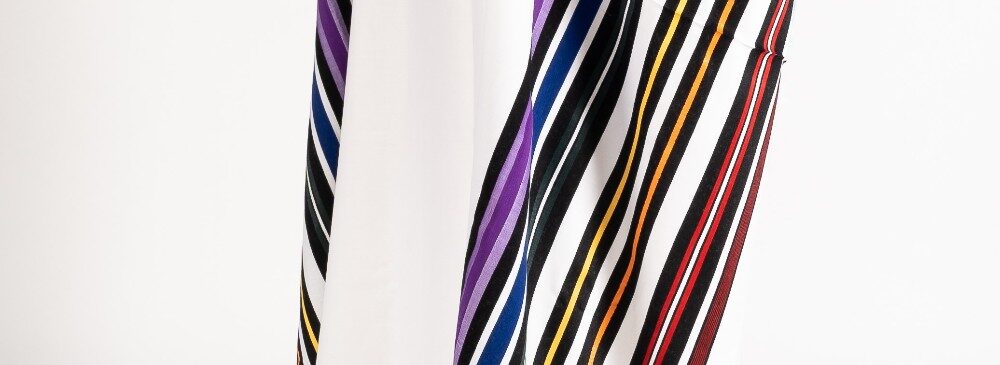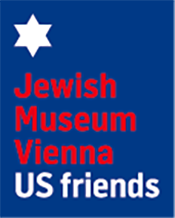Our Rainbow Tallit
Jul 20, 2023 | JMW News

Putting on the prayer shawl (tallit) and phylacteries (tefillin) during morning prayer is one of the millennia-old rites of Judaism that goes back to the Torah. Whereas in traditional Judaism the tallit is only worn by men, today more and more women from liberal, conservative, and sometimes also orthodox communities see it as their right to wear a prayer shawl.
The Rainbow Tallit, designed by Zalman Schachter-Shalomi, the founder of the Jewish Renewal movement, was acquired by the Jewish Museum Vienna for the Many Faces of Kabbalah exhibition. It reflects the artist’s anchoring in Jewish tradition and his profound preoccupation with Jewish mysticism as well as the current examination of socio-political changes. His Rainbow Tallit was inspired by the image of the divine robe of light, which goes back to Psalm 104:2: “Wrap yourself in light as if it were a robe.” The arrangement of the individual color stripes corresponds to the colors of the lower seven Sefirot (divine emanations) and the six days of creation, as well as the earth as the seventh element. While the upper three Sefirot (Keter, the source of light, and Chokhmah with Binah) are white, the fourth sefirah – Chesed – corresponds to the purple stripe; the fifth, Gevurah – the blue one; Tiferet – the green one; Netzach – the yellow one; and Hod – the orange stripe. Yesod receives the red stripe, symbolizing the sixth day of creation when mammals came into existence, with the color red representing blood. Malkuth, the last sefirah, embodies the earth and is expressed by a brown stripe.
Since the Jewish Renewal movement has been committed to the rights of homosexual and transgender people (LGBTIQ) from the beginning, the rainbow colors in the tallit took on an additional symbolic meaning as an expression of Jewish pride with the emergence of the Jewish LGBTIQ movement. Starting in the United States, the rainbow designed in 1978 by the artist and activist Gilbert Baker established itself in the late 1970s as a symbol of the homosexual emancipation movement.
To this day Jewish Renewal congregations combine Neo-Hasidism and kabbalah with socio-political commitment. New perspectives on traditional commandments are intended to contribute to the betterment of the world (Tikun olam), whereby ethical and ecological standards, along with meditation, yoga, and Sufi-inspired chants, have made the movement a creative force in contemporary Judaism.
